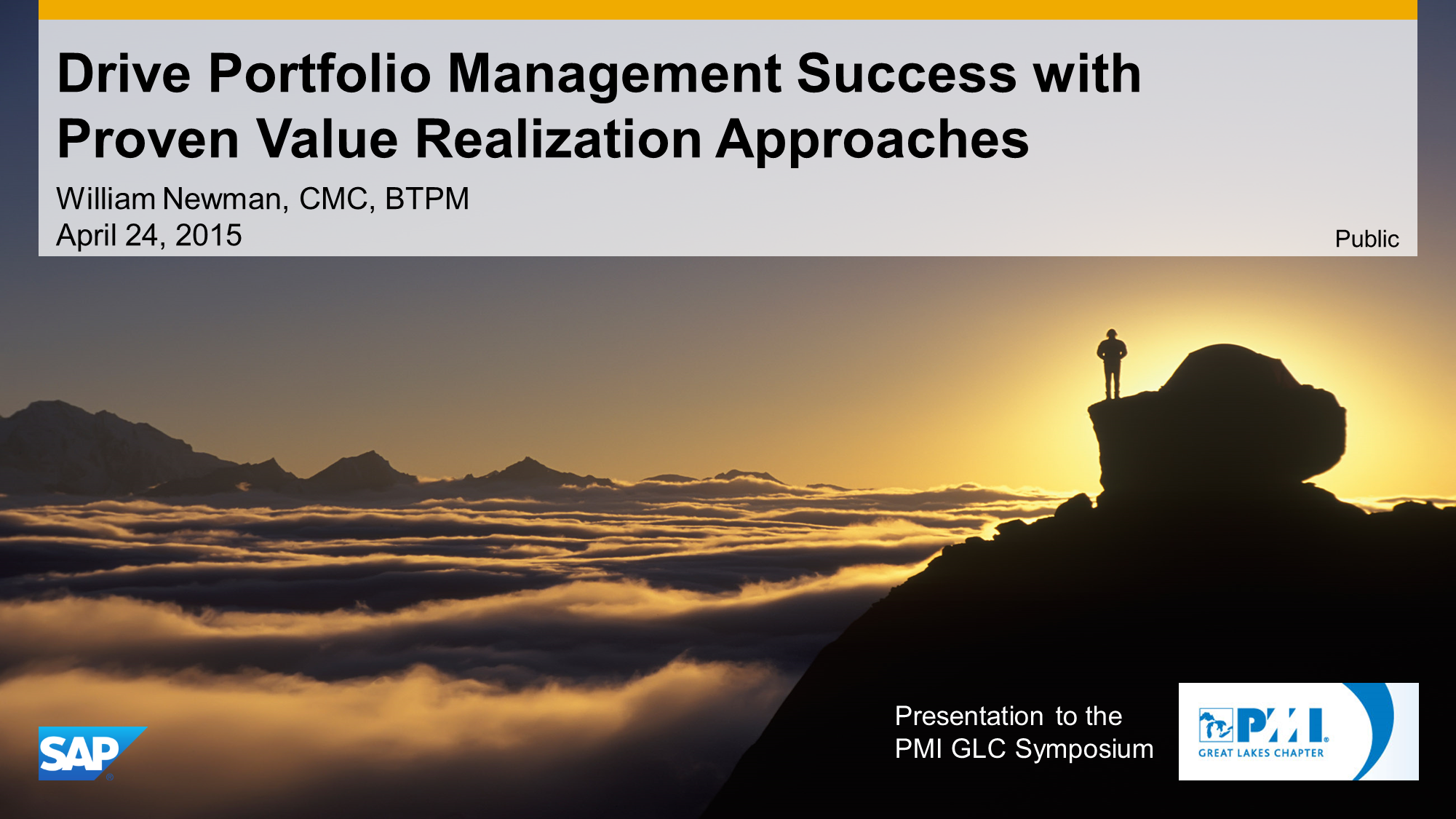During a recent presentation to the Project Management Institute (PMI) Great Lakes Chapter Symposium, I presented a session on proven value management techniques. The premise is that, while not overtly difficult to do, most organizations that embark upon enterprise systems transformation programs begin their value realization journey on good footing. It was well-attended with over 50 practitioners and colleagues as one of the day's break-out sessions (shameless selfie from Instagram, below).
 Our experience inside SAP particularly with our Strategic Customer Program (SCP) and Value Partnership Services (VPS) engagements illustrate good alignment to initial value drivers and business outcomes, resulting in a solid business case and value proposition to get started with a program and commitment of financial, human and capital assets.
Our experience inside SAP particularly with our Strategic Customer Program (SCP) and Value Partnership Services (VPS) engagements illustrate good alignment to initial value drivers and business outcomes, resulting in a solid business case and value proposition to get started with a program and commitment of financial, human and capital assets.
Where most companies fall short, then, is immediately following program initiation activities. Rather than have value management exist as an ongoing concentric and parallel work stream to program development, value management rather falls dormant and status tracks progress to tasks, not to value. To combat this, the most successful of SAP customers employ a full life-cycle value management approach – from cradle to grave – with regular cadence of governance activities, tracking and monitoring to ensure proper adjustments and benefit harvest.
One technique that successful companies leverage is value mapping. Value mapping assigns all of the process and performance improvements (PPIs) required to change conditions enabling benefits, and assigns key performance indicators (KPIs) and business outcomes to a stakeholder responsible for driving change and results. These PPIs are tracked and monitored, along with any changes in assumptions due to market forces or business conditions, and adjustments can be made along the way. Not only does this technique – used in conjunction with full life-cycle governance – allow for stakeholders to manage incremental changes and conditions, it also can act as a lever to accelerate change to capture new innovations or strike quickly into new market opportunities.
Please enjoy the slides from the Symposium from SlideShare, where you might find other materials on this and other topics.

